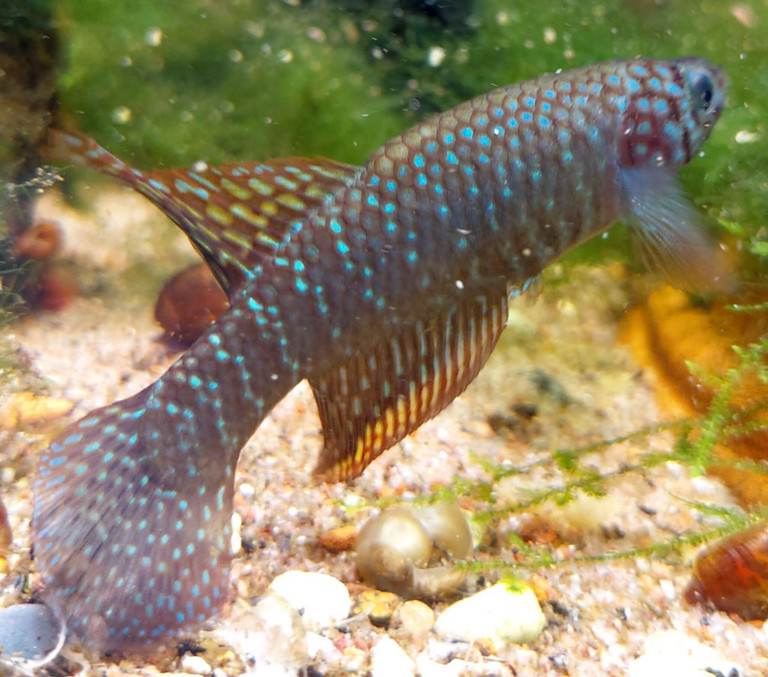One group of killifish often recommended for beginners are the West African killies, those of the genera Aphyosemion and Fundulopanchax. However, my experience with these West African killies is scant, so they will not be included here.
Moreover, while killies have a reputation of being jumpers, this is true only of some groups or species, such as non-annuals of the Rivulus group from South America, or many West African non-annuals. The species I present here are all "non-jumpers", which is already a great boon for ease of keeping.
All species listed here are also not picky eaters. That means no finicky killies that only accept live foods. All species here will gladly take dry foods as adults. Some even as fry.
honorable mention #1: Chapalichthys pardalis
Not a killie, but a liverbearer goodeid. Hence, only an honorable mention. However, as far as goodeids go, the polkadot splitfin (Chapalichthys pardalis) is probably one of the easiest to keep and breed. It will thrive in a wide range of water conditions. Adults do not typically prey much on the young. The only downside is that, because it is so prolific, soon you will run out of space for all the young.
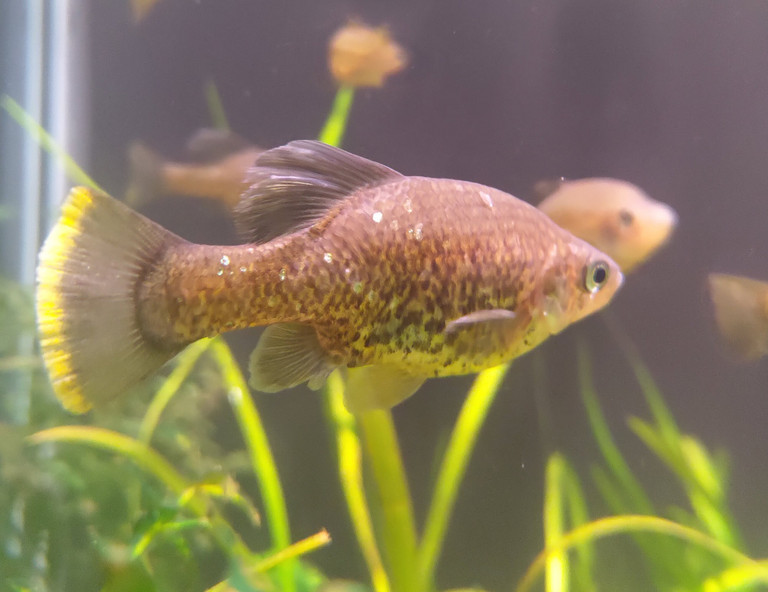
honorable mention #2: Nothobranchius
There will always be a warm place in my heart for Nothobranchius species, being the first killies that I have kept, and I always try to keep some. Many Nothobranchius are recommended as beginner species (for example, N. korthausae and N. guentheri; AKA Beginners Guide; I have also kept N. palmqvisti and occasionally managed to grow large groups to adulthood). The males of many species are among the most colorful aquarium fish one can find. However, I have always struggled with keeping their populations going.
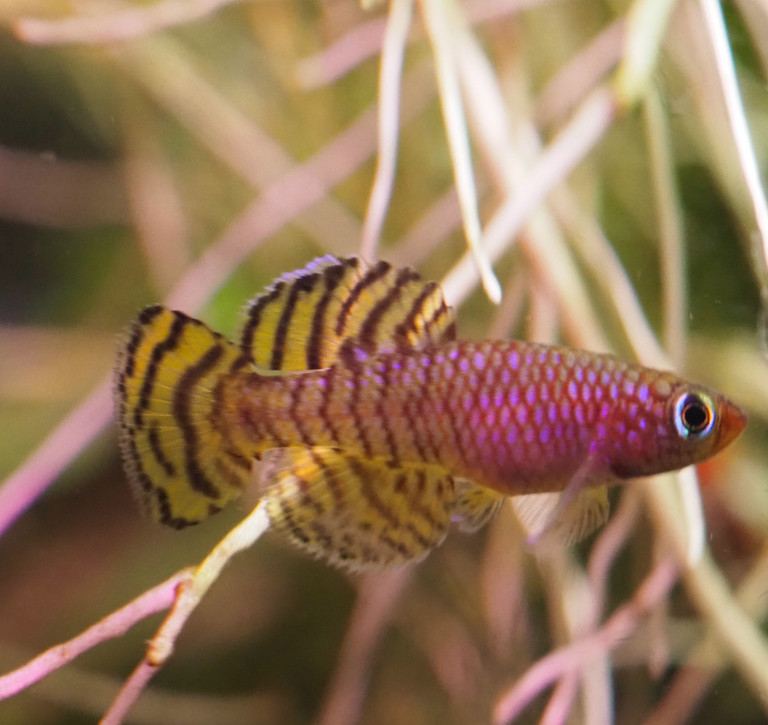
Nothobranchius are notorious for skewed male-biased sex ratios, and that is also my experience. One generation with no surviving female is all it takes to lose the population. It is required to keep a close watch on fry as they grow, and separate them into different groups according to size and sex. That is why I do not recommend them here as beginner species. Most species, though, are easy to breed, once the fry have grown to adulthood.
No.3: Ophthalmolebias constanciae
The Featherfin Pearlfish (Ophthalmolebias constanciae) is a prolific small South American annual killifish (check also December 2022 spotlight). It is an attractive fish that matures quickly, and is ready to spawn at about 8 weeks of age. There are usually enough of both males and females to create several breeder groups. The incubation time for eggs is also not too long, about 2-3 months, which means that the hobbyist does not need to wait too long. Spawns, however, can still give large hatches, even after close to a year, and several cycles of wetting and drying.
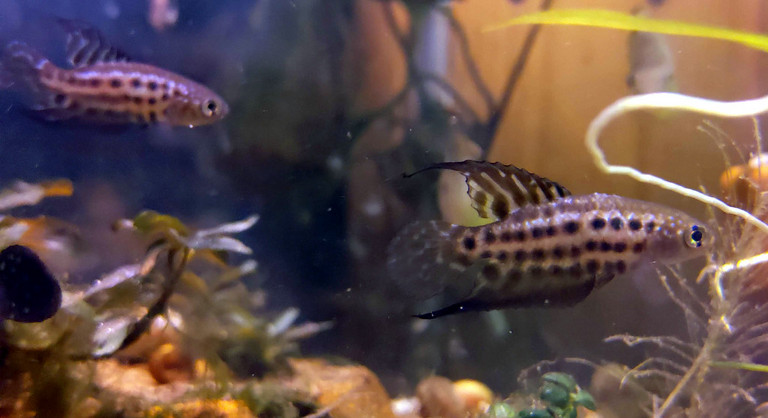
The reason I list it as #3 is that occasionally some wettings do not give so many fry, but that is corrected next time. Also, the fry are relatively small, which means that, in addition to the usual microworms and vinegar eels, infusoria is recommended as fry food during the first couple of weeks.
Overall, though, if you want a small killie as a beginner species, O. constanciae is an easy and attractive fish.
No.2: Pachypanchax sakaramyi
The Madagascar panchax (Pachypanchax sakaramyi) is still the only non-annual that I keep long-term. It is an extremely hardy species, tolerant of a wide range of water conditions. I keep it in relatively soft water (100-150 ppm). With enough vegeration and floating plants, many fry will survive and the population will increase steadily, without any need for a separate breeding setup. Otherwise, the usual setup for breeding non-annual killies works just fine, with a slightly larger aquarium (40-60 L), spawining mops and plants. Eggs can be kept in mops, or moved to another container for water incubation.
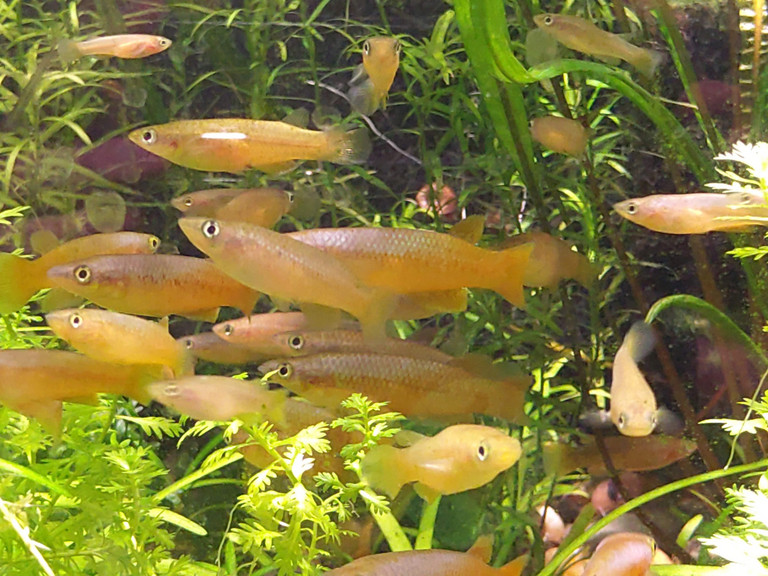
Overall, Pachypanchax species are unique, interesting and extremely hardy non-annual beginner killies. The only downside for P. sakaramyi is that it is a long-lived and relatively large killifish, which means that a permanent setup of a sufficiently large aquarium is required. I house my population of several dozens in a 300 L aquarium.
No. 1: Nematoloebias papilliferus
And finally, my Number One beginner killie is Nematoloebias papilliferus (check also February 2023 spolight). Both this and other species of the genus Nebmatolebias are extremely prolific annual killifish. Wettings of spawning peat consistently give large numbers of hatches, and the fry are relatively large, ready to consume artemia nauplii and finely ground dry food (in addition to microworms, vinegar eels and infusoria).
Sex ratios are never too skewed, which means that several breeding groups can be easily set up each generation. I keep a large group of them in a 1 meter long community tank, and then additionally rotate small groups in smaller (20-30 L) tanks. Incubation time is not long (as short as two months in room temperature), and good numbers of hatches are still obtained even after many cycles of wetting and drying.
Based on my experience, Nematoloebias papilliferus is close to a perfect beginner killie: extremely hardy; can be easily kept also in small tanks; very prolific; not a jumper; easy to feed, breed, hatch, and grow. Additionally, it is quite a colorful and attractive species – even the females have nice zebra-like patterns of dark stripes. What more can you ask for in a beginner killie.
